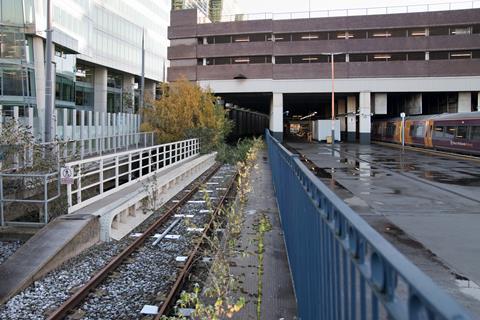
UK: Sub-national transport body Midlands Connect has published Going for Growth, proposing up to £1·5bn of new or improved infrastructure in 2025-30 to ‘transform east-west connections in the Midlands’ by facilitating the operation of more than 100 extra trains.
The outline business case for the ‘biggest step possible in levelling-up the Midlands’ has been submitted to the government in partnership with Network Rail and with the backing of 47 organisations including West Midlands Combined Authority, local authorities, LEPs, chambers of commerce, HS2 Ltd and East Midlands Airport.
Midlands Connect is now hoping for funding for the full business case to make the project ready for delivery.
Its analysis claims that every £1 spent on the project would deliver over £1·50 in benefits for the wider economy, and if funded by the government this would ‘supercharge the economy by bringing the East and West Midlands closer together’.
‘We know the project has the backing of the businesses, communities and political leaders in the Midlands, and we stand ready to kickstart its delivery and get spades in the ground’, said Midlands Connect Chairman Sir John Peace. ‘The Midlands Rail Hub will significantly impact the future of travel for generations to come.’
Proposals

The plan announced on December 5 restates proposals to construct two new chords to the south of Birmingham city centre as well as 11 other infrastructure interventions throughout the region.
These chords would be located on the Camp Hill line that runs between Bordesley Junction and King’s Norton Junction, itself due to regain passenger services in 2023, allowing trains to access Birmingham Moor Street station. The West Chord, which would provide access to Moor Street from the southwest and Wales, would enable an improved service to be offered on the Hereford and Worcester corridors; the East Chord would create an access to Birmingham Moor Street from the East Midlands. Both would enable journey time reductions whilst releasing capacity at New Street for other service improvements.
Other upgrades include the reinstatement of Snow Hill platform 4, which was taken out of use by 1999 to enable the construction of the Midland Metro light rail terminus but has been unused since the 2015 diversion of the trams through the city centre.
At Birmingham Moor Street platform 5 would be returned to use and additional east side platforms A & B would be constructed. These would require widening Bordesley viaduct.
Improvements would also be required around Kings Norton, Barnt Green and Stoke Works junction, a Malvern Wells turnback facility created, partial double-tracking between Ledbury and Shelwick, Water Orton would be remodelled, Nuneaton to Wigston signalling improved to reduce headways and freight loops created between Nuneaton and Leicester.
Pan-regional benefits
The remaining proposals are a mix of regional and local enhancements.
The regional interventions are:
- an additional train per hour between Birmingham and Bristol;
- an additional train per hour between Birmingham and Cardiff via Gloucester stopping at Worcestershire Parkway;
- an additional train per hour between Birmingham and Hereford via Worcester, stopping at Bromsgrove, Great Malvern and Droitwich;
- an additional fast train per hour between Leicester and Birmingham, stopping at Nuneaton;
- an additional slow train per hour between Leicester and Birmingham calling at Coleshill Parkway, Nuneaton, Hinckley, Narborough and South Wigston.
Local improvements would be:
- one extra train per hour from Redditch to Lichfield Trent Valley stopping at Alvechurch, Barnt Green, Longbridge, Northfield, Kings Norton, Bourneville, Selly Oak, University, Five Ways, Birmingham New Street, Duddeston, Aston, Gravelly Hill, University, Chester Road, Wylde Green, Sutton Coldfield, Four Oaks, Butlers Lane Blake Street, Shenstone, Lichfield City;
- one extra train per hour from Bromsgrove to Lichfield Trent Valley stopping at Barnt Green and the stations outlined by the service above. Together with the service above this means the Cross City Line would run at six trains per hour;
- rerouting of the upcoming two trains per hour from Kings Norton to Birmingham New Street via the Camp Hill line to instead run to Moor Street.



